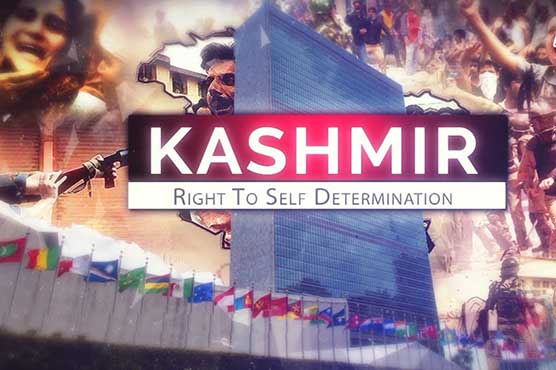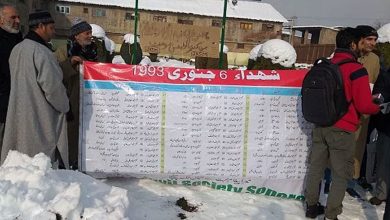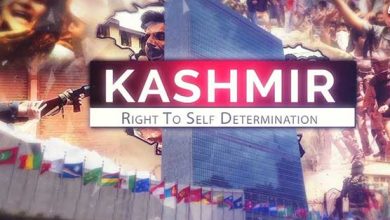India’s Intransigence and International Inaction: The Kashmir Crisis Endures
Shaikh Yaqoob

The Kashmir conflict remains a cornerstone of instability in South Asia, underpinned by historical grievances, unfulfilled promises, and competing national narratives. The region’s struggle for self-determination, as recognized by the Jan 5, 1949, United Nations Commission for India and Pakistan (UNCIP) resolution, has been overshadowed by Indian intransigence, international inaction, and a deteriorating human rights situation. Moreover, the nuclear capabilities of India and Pakistan amplify the conflict’s global implications.
In the wake of the first Indo-Pak war (1947–1948) over the future status of the state of Jammu and Kashmir, the UNCIP resolution was a pivotal effort to resolve the Kashmir dispute. It outlined three key steps:
1. Ceasefire Agreement: A halt to hostilities between India and Pakistan.
2. Demilitarization: Withdrawal of troops from both sides to create conditions for a plebiscite.
3. Right to Self-Determination: A plebiscite under UN auspices to allow Kashmiris to decide their future.
While Pakistan agreed to the terms, India’s subsequent reluctance and insistence on integrating Kashmir into its union derailed the resolution’s implementation. This historical betrayal has left the Kashmiri people in a perpetual state of disenfranchisement and conflict.
Despite its centrality in passing the 1949 resolution, the UN has largely abdicated its responsibility toward Kashmir. The shift from multilateralism to bilateralism—encouraged by powerful states—has emboldened India’s stance. Over time, geopolitical priorities, such as the Cold War and the post-9/11 “War on Terror,” diverted attention from Kashmiris’ plight.
The 2019 revocation of Article 370 by India, stripping Jammu and Kashmir of its autonomy, marked a turning point. The move was met with international criticism but no concrete action, underscoring the erosion of global commitment to resolving the conflict.
India’s policies in Kashmir reflect a blend of strategic rigidity and authoritarian governance, characterized by:
1. Militarization: With over 900,000 troops, Kashmir is the most militarized region in the world, effectively making it an occupied territory.
2. Repressive Legislation: Laws like the Armed Forces Special Powers Act (AFSPA) and Unlawful Activities Prevention Act (UAPA) grant Indian forces sweeping powers with virtual immunity, fostering systemic abuses.
3. Demographic Alteration: Post-2019 domicile and land laws aim to dilute the Muslim-majority character of Kashmir, sparking fears of demographic engineering.
This approach has been supplemented by a sustained narrative framing Kashmiri resistance as “terrorism,” delegitimizing their struggle for self-determination.
The people of Kashmir have borne the brunt of violence and repression by the Indian occupation forces as documented by international organizations like Amnesty International and Human Rights Watch. Even the reports of the UNCHR Office in 2018 and 2019 have documented and expressed deep concern over extrajudicial Killings, torture, widespread use of excessive force, arbitrary detentions, custodial deaths, sexual violence the women face as a tool of intimidation, mass surveillance and communication blackouts. India’s control over the internet and media stifles dissent and isolates Kashmiris from the global community.
The abrogation of Article 370 exacerbated these conditions, triggering widespread detentions, including of political leaders, and a crackdown on civil liberties. The Kashmir conflict is not merely a regional issue; it is a flashpoint with global ramifications. India and Pakistan have fought three wars over Kashmir, with the 1999 Kargil conflict occurring after both became nuclear powers. There have been many skirmishes and military standoffs during the last two decades and as recently in 2019 when Indian air force breeching the Pakistan air space and carried out an aerial raid at Balakot which was responded in kind by the PAF knocking out of the skies a couple of Indian fighter jets and capturing an Indian pilot, Abhinandan. The episode heightened fears of escalation and an all-out war, however, with the global intervention and Pakistan’s exhibition of sanity and strategic maturity, it was averted sparing the subcontinent of a devastating full-scale war, possibly a nuclear one with catastrophic consequences not only for South Asia but for the world. The stark reality of nuclear dimension underscores the urgent need for conflict resolution.
What is the path forward?
A resolution to the Kashmir dispute requires commitment, compromise, and adherence to international law:
1. Reaffirmation of UN Resolutions: The international community must reinstate the centrality of the 1949 UNCIP resolution and other host of relevant resolutions.
2. Addressing Human Rights Violations: India must end impunity, repeal draconian laws, and allow international observers into Kashmir.
3. Facilitating Dialogue: Meaningful engagement between India, Pakistan, and Kashmiri representatives is essential to finding a lasting solution.
4. Empowering Kashmiris: Any resolution must prioritize the aspirations of the Kashmiri people, ensuring their usurped right to self-determination.
In short the Kashmir conflict epitomizes the failure of international systems to uphold justice and peace. The unfulfilled promise of the 1949 UNCIP resolution and decades of Indian intransigence have plunged the region into an abyss of suffering and instability. As a nuclear flashpoint, Kashmir demands urgent attention and a holistic approach to ensure peace, dignity, and self-determination for its people.
The world must rise above geopolitical interests and act decisively to resolve this protracted conflict. Failure to do so risks not only the lives of millions in South Asia but also the stability of the global order.
Note: The views expressed are those of the writer, a leader of APHC-AJK, and do not necessarily represent the opinions of KMS.








